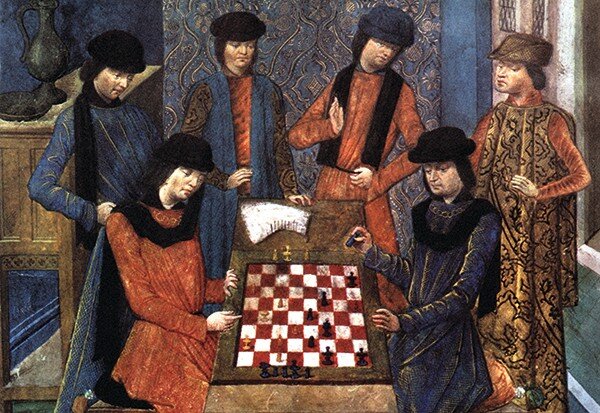The Evolution of Chess
Did you know that the game of chess was created 1,500 years ago? Chess, like most things, has evolved over time… When we compare current day chess to its origin years, it is a whole lot different from what it is now.
BY ROSE MORDEN - SALK SCHOOL OF SCIENCE
HER LEAGUE MEMBER & HER NEWS COLUMNIST
The Royal Board Game of Ur
Did you know that the game of chess was created 1,500 years ago? Chess, like most things, has changed over time. New chess players do not often know the very historical beginnings of chess at all. When we compare current day chess to its origin years, it is a whole lot different from what it is now.
It all started in the 6th century in India in the Gupta Empire. It was played on an 8 by 8 Ashtapada board. This board was used to also play the game Chaturanga. Chaturanga is a Sanskrit word meaning four divisions and could be played by two or four players. It had a rook/castle which was referred to as a boat, a knight/horse, an elephant, which was what the bishop is now, and a king. This game then spread to Persia. In Persia, the name was changed to “chess,” originating from the word Shah, meaning king. The word checkmate was from the word Shah mat, also known as, “the king is helpless.”
In the seventh century, there was the Islamic conquest of Persia. This is when the Arabs were introduced to chess. With the Arab influence on chess, the game focused less on military strategy parallels, and more on artistic patterns. Through trading on the silk road, the game spread to Southeast Asia and later East Asia. In China they had already been playing a game that had originated 1,500 years prior to chess, which had circle pieces placed on intersecting lines forming squares. This game known as Go was also played in Japan and Korea. Ideas, rules, and strategies from various game were adopted and incorporated. For instance, with Go, when you capture a piece, you could use those pieces to your advantage. Leaders of the Mongol empire played on an 11 by 11 board and the more complex playing area had citadels which were safe squares.
Later in Europe in 1000 AD, chess was even considered a mandatory part of a formal education. People would use it as a reference for different social classes. Class structure was evident in the chess pieces and have persisted into modern chess. Then during medieval times, churches frowned upon chess being played. At some point many religions have either discouraged or forbid chess playing, including Catholics, Jews, Muslims, and others. Chess was considered a distraction from educational and religious studies. It even reached a point where chess was banned in France for a time.
By the 15th century, much of the classical chess rules resemble how the game is played today. The pieces were called what they are now and the pieces moved in similar methods. The concept of checkmate remains the same, still it is fascinating to think how little chess has changed in the last few hundred years, and yet, how collectively positioning and strategy has developed during this same time period.
Chess play has improved over the years. At the start, chess was played with more simple ideas and tactics, but over the millennia, chess theory involving opening strategy and endgame positioning has grown more calculated and complex. Chess’s evolution is why now this competitive pastime is enjoyed throughout the world by millions of people daily, and why the HerMoveNext Foundation Inc is encouraging more girls to enjoy this historical game as well.
All information obtained from: https://www.youtube.com/watch?v=YeB-1F-UKO0
Chess Illustration from 1283 AD
Chess Book from 1624


